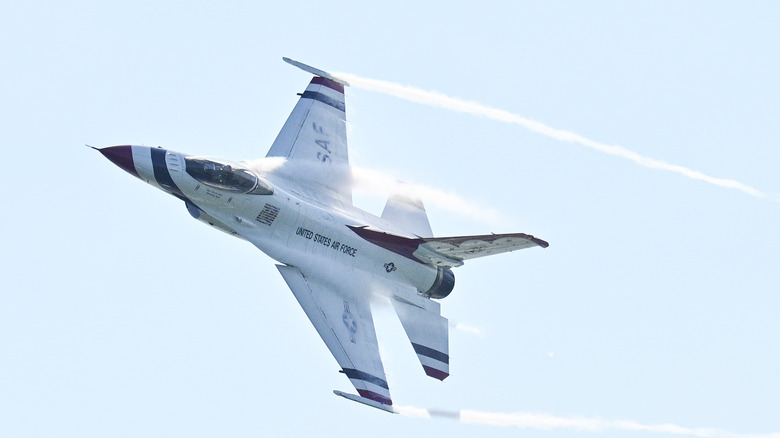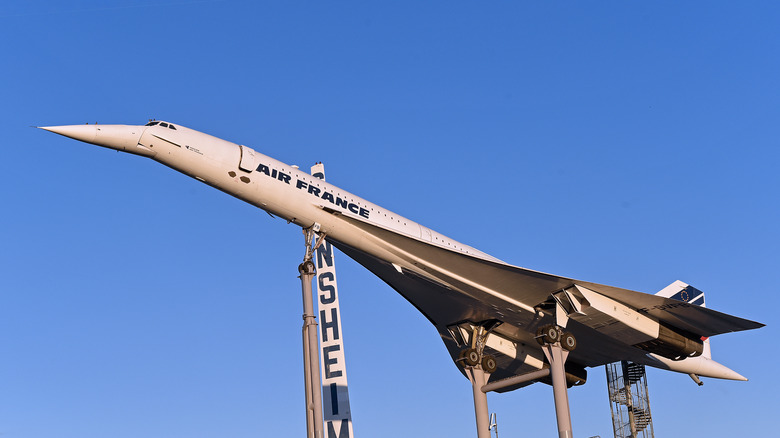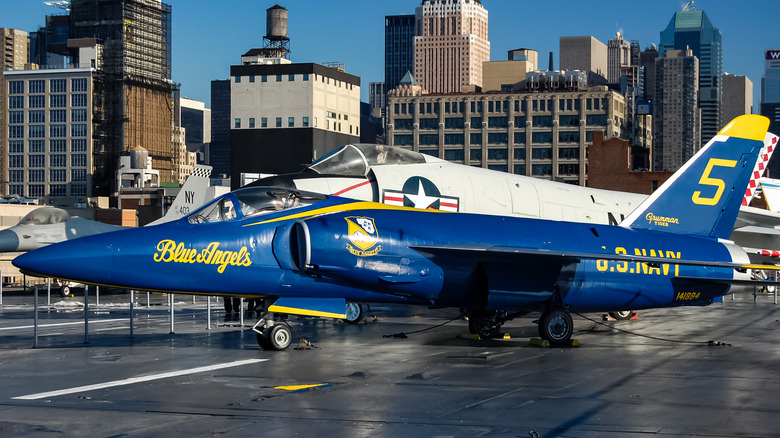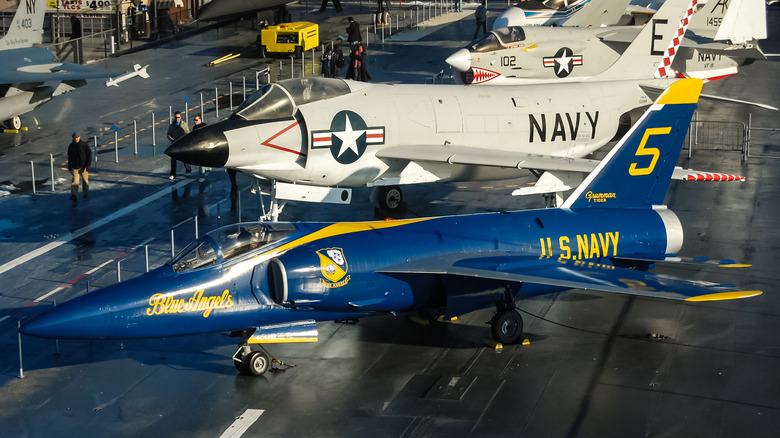The US Military Made A Plane So Fast, It Shot Itself Out The Sky
Naturally, there have been numerous attempts to make the tricky concept of airplane flight understandable. Live Science breaks it down to two crucial forces that are needed: lift and thrust. The former relates to the air moving around the plane's wings, and the differing pressure acting upon it. Thrust, meanwhile, is provided by the engine. It is not as simple as that.
Once up in the air, at any rate, an aircraft doesn't seem to be moving as fast as it is from the inside. Per Flight Deck Friend, the average passenger plane cruises at speeds of up to around 575 mph, yet other aircraft can travel a good deal faster. The U.S. military, in fact, developed an aircraft that could reach such absurd speeds it could shoot itself down.
Aviation technology has certainly come a long, long way. In 1909, the Wright brothers developed a plane for the United States Army Signal Corps (per Wright Brothers). The first of its kind, their deal with the army meant they'd receive a handsome bonus for every mile per hour that the finished craft could achieve over the minimum speed the army designated: 40 mph. Pushing to make the most they could from the contract, their plane reached ... 42 mph. The so-called Military Flyer, for its time, was still quite the extraordinary achievement.
Air speed is a good thing, until it isn't
Sixty years later, per Britannica, the legendary Concorde made its first true flight. This formidable British-French venture could reach speeds of up to 1,354 mph, an absolutely dizzying pace. It's difficult to imagine what the Wright brothers' reactions would have been to such an event, but Concorde ultimately proved far too costly to maintain.
In the 1950s, the United States Navy also developed an aircraft of tremendous speed. While it couldn't fly at twice the speed of sound, it seems that it was fast enough to meet its own bullets in the air.
Per Plane & Pilot Magazine, the aircraft in question was a Grumman F11 Tiger. April 1955 saw the sleek new model, which was a revamped take on the existing F9F-6/7 Cougar, almost hit the speed of sound. Impressed, the Blue Angels adopted the Tiger, and continued to fly it until 1969. The magazine reports that its popularity among the Navy began to fade quite quickly as its technical flaws became more apparent and more capable competitors began to outpace the plane.
Faster than a speeding bullet ... literally
The Tiger became notorious for an unfortunate event during the Cold War. At the time, per We Are The Mighty, the U.S. felt a tremendous pressure to outdo the Soviet Union's MiG-15, an aircraft that approached Mach 1 and boasted impressive performance. It was a great threat during an incredibly turbulent time, and so the United States' Tiger had to be completed and assert its worth quickly. One proud pilot of this magnificent new flying machine was Tom Attridge, a test pilot.
Putting the plane through its paces on September 21, 1956, Attridge flew at around 20,000 feet, before starting a dive at close to the speed of sound. While doing so, according to We Are The Mighty, he fired the plane's four guns. Some 7,000 feet closer to the ground, he blasted again. Continuing the dive to just 7,000 feet above the ground, his Tiger was suddenly struck by something incredible: its own bullets.
According to the website, Attridge's Tiger was struck in the windshield, the nose cone and the right of its body, causing it to lose power. The skilled pilot was able to (relatively) slowly land among some trees, fortunate to escape the terrifying, incredible accident with his life.
How did the plane catch up with the bullets?
How did this happen? Plane & Pilot Magazine attempts to tackle the science. According to the publication, the shots were reportedly moving at around 2,000 mph as they left Attridge's cannons. The plane itself was flying at less than half this speed at the time. It may seem like a leap of Looney Tunes logic to imagine the plane could have caught up with them, but it seems that it did.
It was only 11 seconds later, the magazine reports, that precisely this happened. The disaster was due to air resistance, which both slowed and altered the trajectory of the shots. The Tiger, speeding up a little as it dove, was drawn into a collision course with the projectiles.
Attridge was back at work early the next year, with a very curious footnote in his distinguished career. He wasn't the only one to experience such a frightening, bizarre and unlikely accident, either. In April of 2019, the Military Times reported that a Dutch F-16 on a training mission suffered similar damage after firing its similar gun: a 20mm cannon. Authorities in the Netherlands set out to investigate exactly how this had happened, but the outlet's headline — "Dutch F-16 makes emergency landing after plane shoots itself" — makes clear that physics-defying oddities can happen if you move fast enough.



